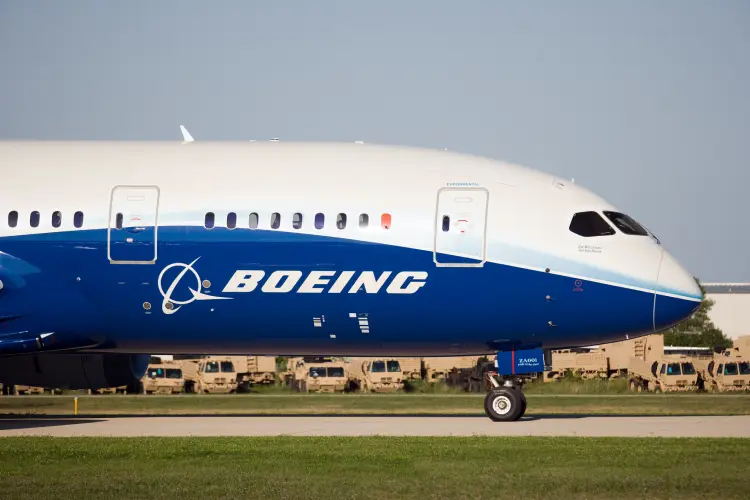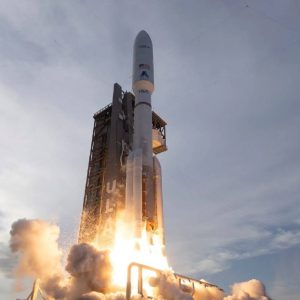
Plane makers Airbus and Boeing have expressed fears that 5G networks could interfere with vital safety equipment on aircraft. It is the latest move in an ongoing battle between the aviation and telecoms industries in the US, which has already led to delays in the roll-out of 5G networks. As 5G becomes more widely used, clashes between emerging technology and legacy spectrum users are likely to become more common.

In a letter to US transportation secretary Pete Buttigieg, Airbus Americas chief executive Jeff Knittel and Boeing CEO David Calhoun highlighted “the US aviation industry’s shared concerns over 5G implementation in the United States”. Telecoms companies say these fears are unfounded.
Following the publication of the letter, trade organisations from both industries got together yesterday for talks on how to resolve the conflict. “After productive discussions, we will be working together to share the available data from all parties to identify the specific areas of concern for aviation,” said a statement from wireless trade group CTIA, Airlines for America and Aerospace Industries Association. But the sectors remain at odds over the danger 5G networks pose to planes.
Does 5G interfere with planes?
The aviation industry contends that the wireless spectrum used by 5G networks could interfere with radio altimeters, which measure a plane’s altitude. “The issue is that the c-band frequency used for 5G in the US is a little bit close to the frequencies used by altimeters,” explains Roslyn Layton, vice president at telecoms consultancy Strand Consult.
This is a problem, Layton says, because there are few rules governing which parts of the spectrum that altimeters can use. This leads to the potential for conflicts with 5G, particularly when it comes to older devices.
C-band, which sits between the 3.4ghz and 4.2ghz frequencies on the wireless spectrum, is in demand among 5G operators because it offers a good balance of bandwidth and reliability. In February, US operators Verizon and AT&T spent almost $70bn buying the rights to c-band spectrum for their own 5G networks. This was due to come into use earlier this month, but was delayed following a bulletin released by US aviation regulator the Federal Aviation Administration, which warned that “action might be required to address potential interference with sensitive aircraft electronics” caused by 5G.
So far, evidence for interference remains limited, with investigations ongoing. Both AT&T and Verizon say they will launch their c-band networks in January regardless but have voluntarily agreed to reduce the power coming from their 5G transmitters for the first six months of operation.
Will this dispute impact other countries’ 5G roll-outs?
The US isn’t the first country to raise concerns over the potential for 5G to interfere with planes. In February the United Arab Emirates’ civil aviation authority (CAA) issued a safety notice to operators and airports warning of potential “major operational risks” posed by the wireless technology. The French CAA has also warned of the potential for 5G devices to disrupt altimeters, and issued guidance that aims to restrict the proximity of 5G base stations to airports.
But with 5G now well-established in many markets around the world, most aviation regulators are content the risks posed by the technology are low, Layton says. “This whole thing is unhelpful for the world’s airport regulators,” she explains. “They have blessed this technology years ago, so what does it look like when the FAA all of sudden says ‘there’s a problem’? It’s really inconvenient and a bit embarrassing.”
Indeed, in the wake of the November bulletin from the FAA, the UK’s CAA said it had no concerns about the impact of 5G on aeroplanes. “We are aware of reports that suggest that the frequency band being used for 5G in a number of countries could potentially pose a risk of interference with aircraft radio altimeters,” a CAA spokesman told The Telegraph, adding that there have been no reported incidents of aircraft systems being affected by 5G transmissions in UK airspace. The spokesman said the CAA is working with Ofcom and the Ministry of Defence to make sure that the deployment of 5G in the UK does not cause any technical problems for aircraft.
Layton does not expect the problems in the US to impact other 5G roll-outs around the world, but says clashes between legacy devices and 5G networks are likely to become more common as spectrum use grows.
“In future we’ll be able to engineer devices like altimeters better so these problems are taken care of at device level,” she says. “Mobile communications are very efficient, we keep moving up the frequency and using higher and higher levels. At the same time, you have incumbent spectrum users, who have legacy devices that are maybe less efficient.
“We’re going to see more of these disputes,” Layton predicts. “People want the services [offered by 5G] but the regulatory world is behind the curve.”






